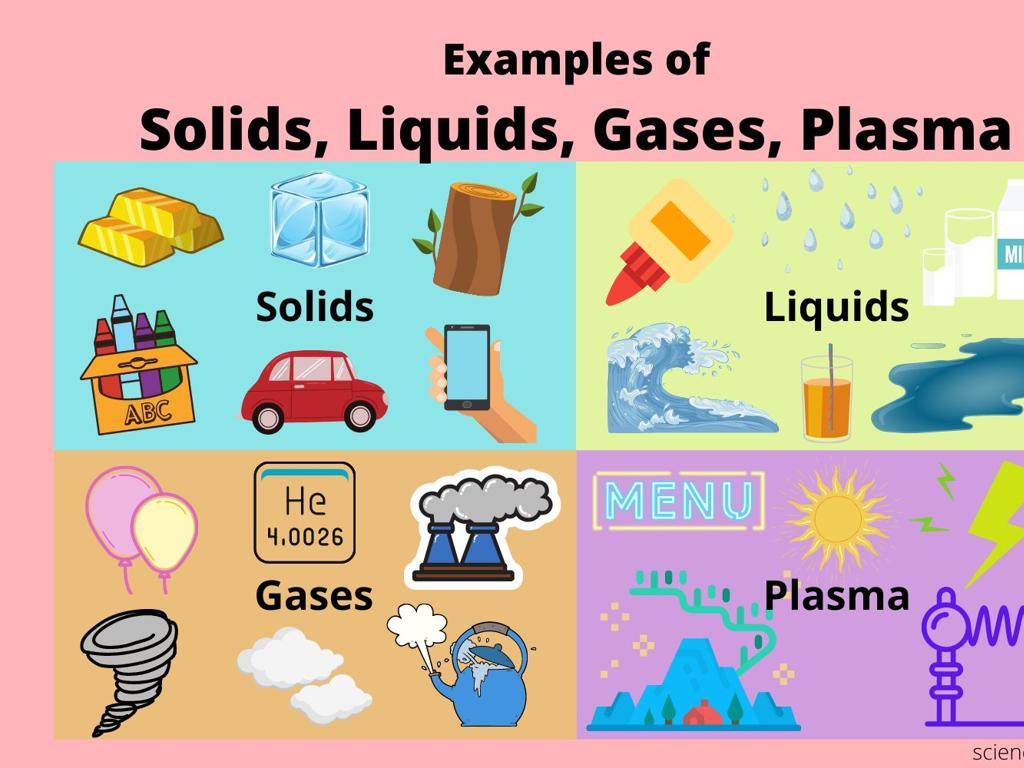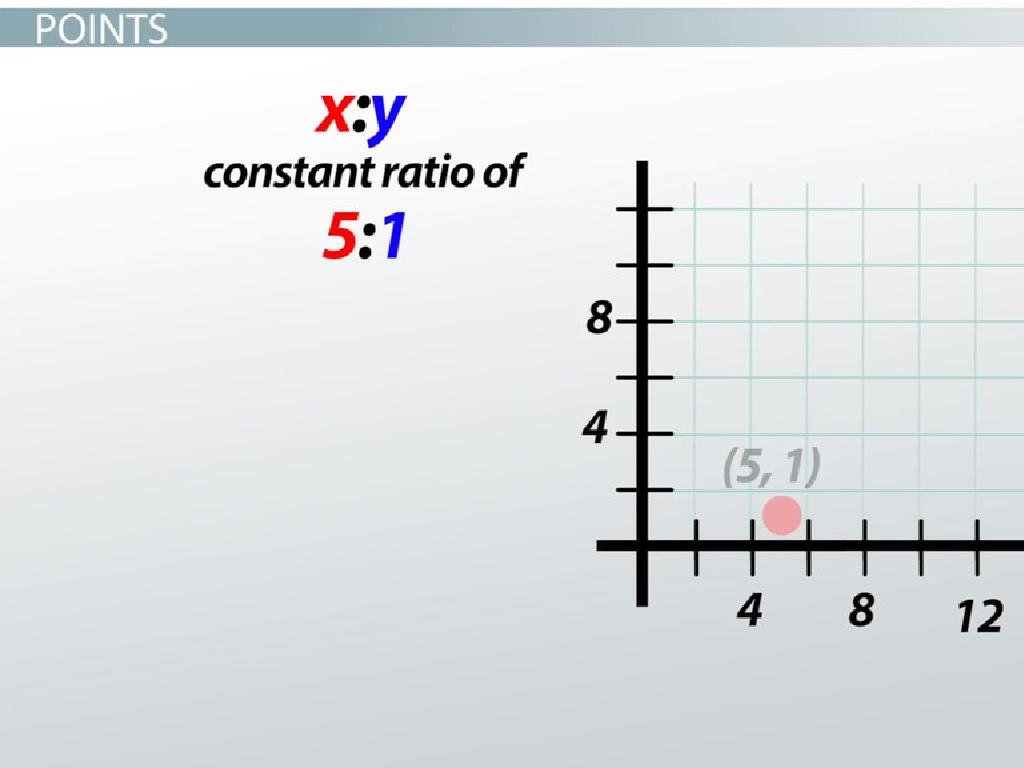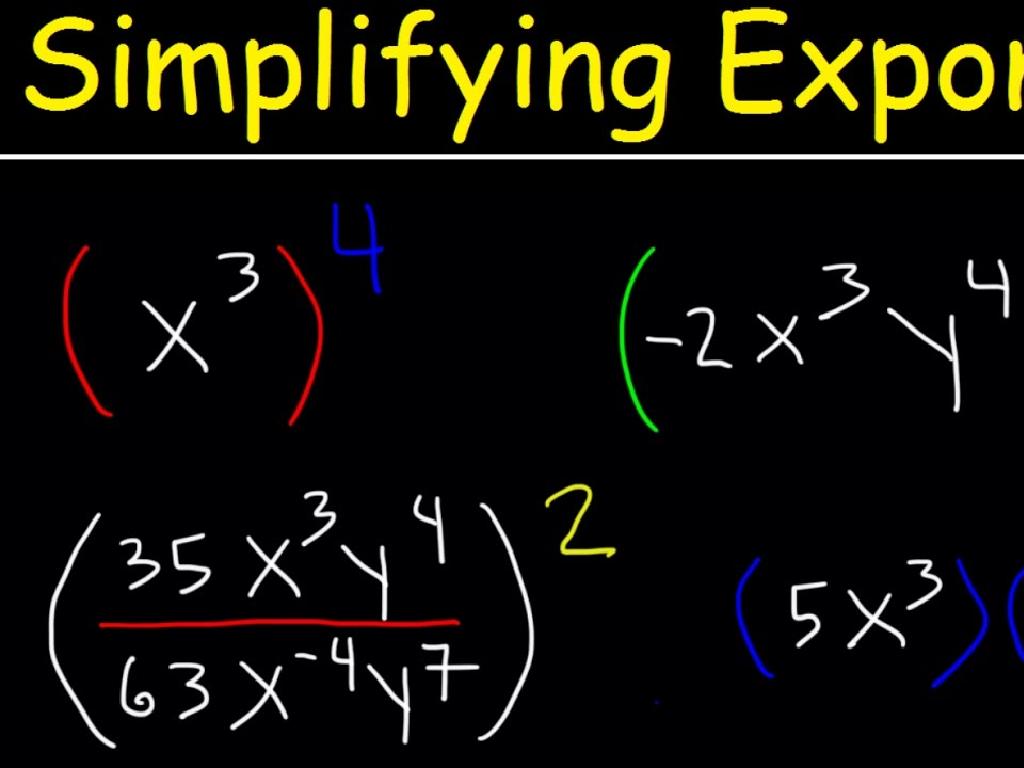Calculate Distance From Speed And Time
Subject: Science
Grade: Sixth grade
Topic: Velocity, Acceleration, And Forces
Please LOG IN to download the presentation. Access is available to registered users only.
View More Content
Calculating Distance from Speed and Time
– Motion involves velocity and forces
– Distance equals speed times time
– If you travel at 10 mph for 3 hours, you cover 30 miles.
– Real-world applications of motion
– GPS systems use this to estimate travel times.
– Understanding motion’s importance
|
This slide introduces students to the concept of motion, specifically focusing on how to calculate distance using speed and time. Begin by explaining that motion is the change in an object’s position and involves concepts like velocity and forces. Emphasize the formula ‘distance = speed × time’ with an example: if a car travels at a speed of 10 miles per hour for 3 hours, it will cover a distance of 30 miles. Discuss real-world applications, such as how GPS systems estimate travel times based on average speed and distance. Highlight the importance of understanding these concepts for navigating the world, planning trips, and understanding natural phenomena.
Understanding Velocity
– Define velocity
– Velocity is speed with a specific direction.
– Speed vs. Velocity
– Speed is scalar; velocity is vector.
– Velocity: Speed with direction
– Example: 10 m/s north, not just 10 m/s.
– Calculating velocity
|
Begin the lesson by defining velocity as a vector quantity, which means it includes both speed and direction. Clarify the difference between speed (how fast an object is moving) and velocity (how fast and in which direction). Use everyday examples, like a car traveling north at 60 mph, to illustrate the concept of velocity. Emphasize that while speed is a scalar quantity (only magnitude), velocity is a vector (magnitude and direction). This foundational understanding will be crucial for later discussions on calculating distance from speed and time, as well as understanding acceleration and forces.
Calculating Distance Using Speed and Time
– Understanding what speed is
Speed is how fast an object moves over a distance.
– Learning how time is measured
Time is measured in seconds, minutes, hours, etc.
– Exploring speed-time relationship
Speed and time are directly related; as time increases, so can distance if speed is constant.
– Calculating distance from speed and time
Distance = Speed x Time. If you know any two, you can find the third.
|
This slide introduces the fundamental concepts needed to calculate distance based on speed and time, which is a key part of understanding motion in physics. Start by defining speed as the distance an object travels per unit of time (e.g., miles per hour or meters per second). Explain how time is quantified using various units and how it can be measured using clocks or stopwatches. Discuss the direct relationship between speed and time, emphasizing that if you know the speed of an object and the amount of time it has been moving, you can calculate the distance it has traveled. Conclude by presenting the formula for distance and work through an example calculation. Encourage students to think of real-life scenarios where they might need to calculate distance, such as planning a trip.
Calculating Distance Using Speed and Time
– Distance equals speed times time
– Understand measurement units
– Common units: meters (m), miles (mi), seconds (s), hours (h)
– Calculate distance: Example 1
– If a car travels at 60 mph for 2 hours, the distance is 120 miles.
– Calculate distance: Example 2
– A runner speeds at 8 m/s for 30 seconds covers 240 meters.
|
This slide introduces the basic formula for calculating distance based on speed and time, which is a fundamental concept in understanding motion. Emphasize the importance of consistent units when calculating, such as meters per second for speed and seconds for time. Provide clear examples to illustrate the concept. For instance, if a car travels at a constant speed of 60 miles per hour for 2 hours, it will cover a distance of 120 miles. Similarly, if a runner maintains a speed of 8 meters per second for 30 seconds, they will have run 240 meters. Encourage students to practice with different speeds and time intervals to reinforce their understanding.
Calculating Distance Using Speed and Time
– Understanding the distance formula
– Distance = Speed x Time. If a car travels at 60 mph for 2 hours, how far does it go?
– Using the formula with various units
– Ensure units for speed and time match, like miles per hour (mph) and hours.
– Converting units for consistency
– If speed is in mph and time in minutes, convert time to hours.
– Practice problem: Car’s journey
– A car at 60 mph for 2 hours covers how many miles?
|
This slide introduces the basic formula for calculating distance based on speed and time, which is a fundamental concept in understanding motion. Emphasize the importance of consistent units when using the formula. For example, if speed is given in miles per hour, time should also be in hours for the formula to work correctly. If necessary, demonstrate how to convert units, such as minutes to hours, by dividing by 60. The practice problem is designed to apply these concepts, where students will calculate the distance a car travels at a constant speed of 60 mph for a duration of 2 hours. This reinforces their understanding and prepares them for more complex problems.
Group Activity: Let’s Calculate Distance!
– Calculate scenario distances
– Present findings to the class
– Discuss answer variations
– Did everyone get the same answer? Why or why not?
– Explore reasons for differences
– Consider factors like rounding, estimation, or calculation errors.
|
This group activity is designed to apply the concepts of speed, time, and distance in a collaborative and engaging way. Divide the class into small groups and provide each with different scenarios where they must calculate the distance traveled using the formula distance = speed x time. After calculations, each group will present their findings. Encourage a class discussion on any variations in the answers. This will help students understand the importance of precision in calculations and how small differences in speed or time can lead to different outcomes. Possible scenarios could include a car traveling at a certain speed for a set time, or an athlete running at a different pace. This activity will reinforce their understanding of the relationship between speed, time, and distance.
Class Activity: Race to the Finish!
– Each student gets a toy car
– Measure car’s travel time
Use the stopwatch to record the time for a set distance
– Calculate the car’s speed
Speed = Distance ÷ Time. Use the formula for calculation
– Share results with class
Discuss how different speeds were achieved
|
This interactive class activity is designed to help students understand the relationship between distance, speed, and time. Provide each student with a toy car, a stopwatch, and a measuring tape. Set a fixed distance and have students measure the time it takes for their car to travel that distance. Then, guide them to use the speed formula (Speed = Distance ÷ Time) to calculate their car’s speed. Encourage students to share their results and discuss the variations. Possible variations for different students could include changing the car’s push force, the incline of the surface, or the type of surface to explore how these factors affect speed.
Conclusion: Distance, Speed, and Time
– Recap: Distance = Speed x Time
– Remember, to find distance, multiply the speed of an object by the time it travels.
– Why it’s important to know
– Understanding this helps in daily life, like planning trips.
– Real-world applications
– For example, knowing how long a road trip takes or how far a ball travels.
– Next Lesson: Acceleration
|
As we wrap up today’s lesson, we’ll revisit the formula for calculating distance based on speed and time. Emphasize the practicality of this knowledge in everyday situations, such as determining travel times or estimating how far a vehicle will go at a certain speed. Highlight the importance of these concepts in various fields, including physics, engineering, and even sports. Looking ahead, prepare the students for the next lesson on acceleration, where they’ll learn how velocity changes over time. Encourage them to think about how acceleration might affect distance and time calculations.
Homework: Calculating Distance
– Complete the distance worksheet
– Find real-world formula applications
– Examples: Traveling, sports, or daily commute
– Be ready to discuss in class
– Understand speed-time relationship
– Distance = Speed x Time
|
This homework assignment is designed to reinforce the concept of calculating distance using the formula Distance = Speed x Time. Students are expected to complete a worksheet that provides practice problems on this topic. Additionally, they should look for real-world situations where this formula is applicable, such as in traveling from one place to another, playing sports, or even their daily commute to school. Encourage students to think creatively and relate the formula to their everyday lives. In the next class, there will be a discussion where students can share their examples and understand how the speed-time relationship is an essential aspect of understanding motion in our world. This exercise will help solidify their grasp of the concept and its practical uses.






